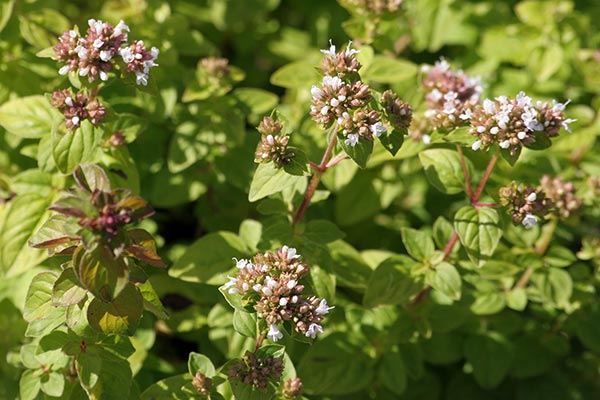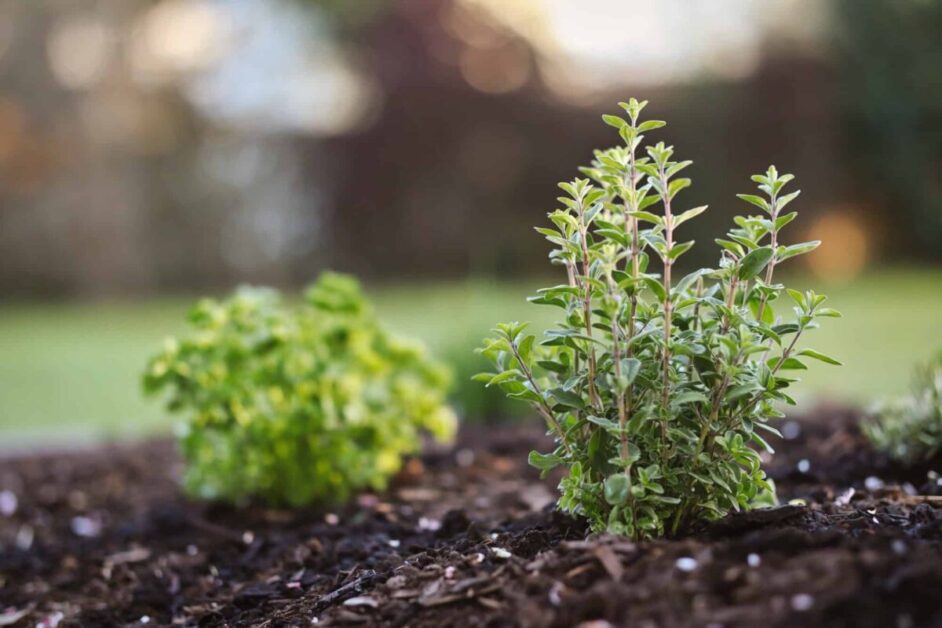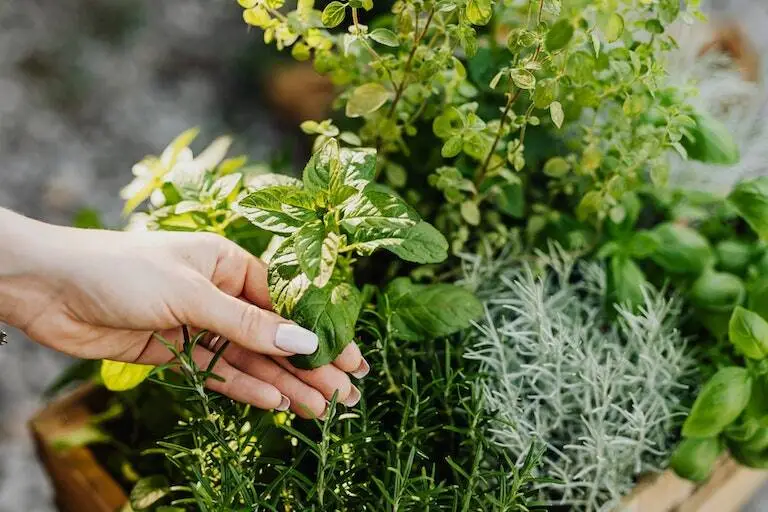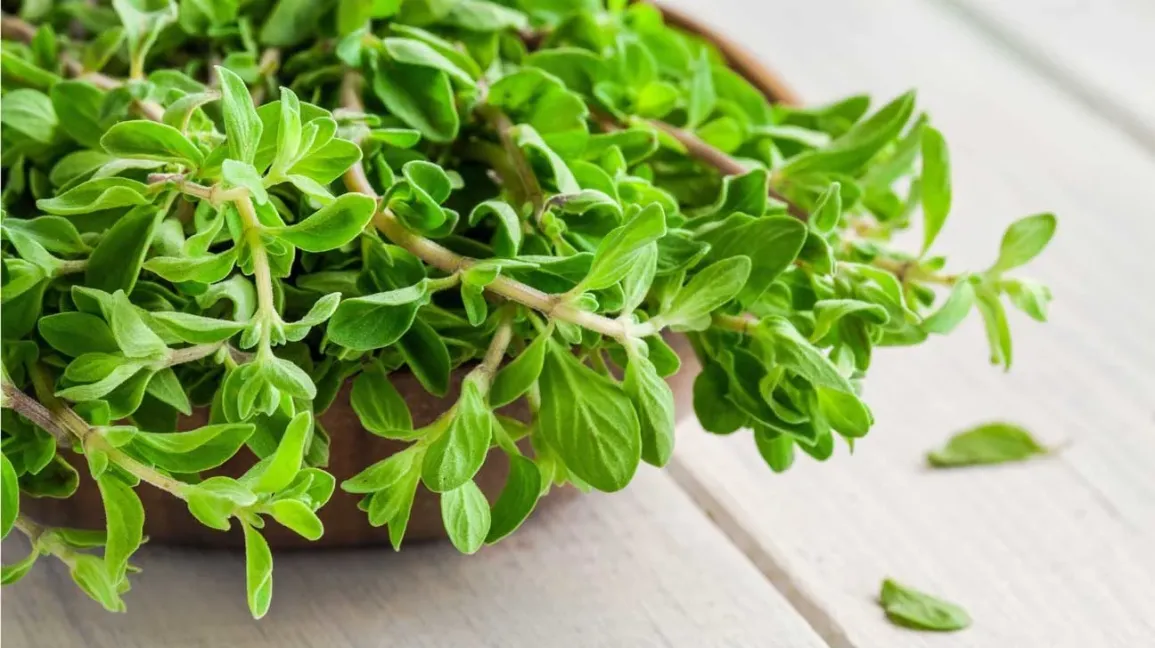Nurturing Vibrant Marjoram Outdoor Herb Space
Table of Contents
Marjoram Outdoor: A Versatile Herb for Your Outdoor Garden
Marjoram Outdoor is a versatile herb that can be a delightful addition to your outdoor garden, offering not only a pop of flavor to your culinary creations but also a touch of beauty with its delicate leaves and clusters of flowers. With its aomatic and slightly sweet taste, marjoram is a popular choice for herb enthusiasts looking to elevate their dishes with a hint of Mediterranean flair. This herb is a member of the mint family and thrives in warm, sunny conditions, making it a perfect candidate for your garden if you have a sunny spot to spare.

One of the key benefits of growing marjoram in your outdoor herb space is its adaptability to various growing conditions, from traditional garden beds to containers or hanging baskets. Whether you have a sprawling backyard or a cozy balcony, marjoram can flourish in different settings, adding a touch of greenery and fragrance to your outdoor oasis. As you embark on your marjoram-growing journey, consider the diverse ways you can incorporate this versatile herb into your garden design and culinary adventures for a truly rewarding experience.
Benefits of Growing Marjoram Outdoor in Your Herb Space
Marjoram is a delightful herb that not only adds flavor to your culinary creations but also offers numerous benefits when grown in your herb space. One of the key advantages of cultivating marjoram is its ability to attract beneficial insects such as bees and butterflies to your garden. These pollinators play a crucial role in the ecosystem by aiding in the reproduction of plants, ensuring a bountiful harvest for your herb garden.
In addition to its role in supporting biodiversity, marjoram is also known for its medicinal properties. Rich in antioxidants and anti-inflammatory compounds, this herb can help boost the immune system and promote overall well-being. By incorporating fresh marjoram leaves into your dishes or infusing them into teas, you can harness the health benefits of this versatile herb while enhancing the nutritional value of your meals.
Choosing the Right Location for Your Marjoram Outdoor Plant
When selecting the ideal location for your marjoram plant, it’s crucial to prioritize sunlight exposure. Marjoram thrives in full sun conditions, requiring at least 6-8 hours of direct sunlight each day for optimal growth and flavor development. Choose a spot in your garden that receives ample sunlight and offers good air circulation to prevent moisture-related issues.
Additionally, consider the soil quality and drainage in the chosen location. Marjoram prefers well-draining, slightly alkaline soil with a pH level between 6.5-7.5. Ensure that the soil is rich in organic matter and has good drainage to prevent waterlogging, which can lead to root rot. Conduct a soil test to determine the pH level and nutrient content, amending the soil as needed to create a hospitable environment for your marjoram plant to thrive.
Preparing the Soil for Healthy Marjoram Outdoor Growth
When preparing the soil for healthy marjoram growth, it is essential to ensure that the soil is well-draining to prevent waterlogging, which can lead to root rot. Marjoram plants thrive in soil that is rich in organic matter, so amending the soil with compost or well-rotted manure before planting can provide essential nutrients for their development. Additionally, testing the pH of the soil and adjusting it to a slightly acidic to neutral range, around 6.5 to 7.0, can further support the optimal growth of marjoram.

Furthermore, it is recommended to loosen the soil to a depth of around 6 to 8 inches to promote good root development and enhance soil aeration. This can be achieved by gently tilling the soil or using a garden fork to break up any compacted areas. Removing any weeds or debris from the planting area is also important to prevent competition for nutrients and reduce the risk of pest infestations that could harm the marjoram plants. By taking the time to properly prepare the soil, gardeners can create an ideal environment for healthy marjoram growth and ensure a bountiful harvest of this versatile herb.
Watering and Irrigation Tips for Marjoram Outdoor Plants
Marjoram plants require consistent moisture to thrive, but overwatering can lead to root rot. To determine when to water your marjoram, simply stick your finger into the soil up to the first knuckle – if it feels dry, it’s time to water. It’s best to water in the morning to allow the plant to dry during the day, reducing the risk of fungal diseases. Additionally, using a soaker hose or drip irrigation system can help deliver water directly to the roots, minimizing evaporation and ensuring efficient water usage.
When it comes to irrigation, avoid wetting the foliage of the marjoram plant as this can promote fungal growth. Aim to water at the base of the plant, directing the water towards the root zone. Mulching around the base of the plant can also help retain moisture in the soil, reducing the frequency of watering needed. Remember, consistency is key when it comes to watering marjoram – too little or too much can stress the plant and affect its overall health and productivity.
Feeding and Fertilizing Your Marjoram Herb
When it comes to feeding and fertilizing your marjoram herb, it’s important to provide the right nutrients to ensure healthy growth and abundant harvests. Marjoram is a relatively low-maintenance herb, but like all plants, it benefits from regular feeding during the growing season. A balanced fertilizer with equal parts of nitrogen, phosphorus, and potassium can help promote vigorous growth and enhance the flavor of the leaves.
Organic fertilizers such as compost or well-aged manure are excellent choices for feeding marjoram, as they not only provide essential nutrients but also help improve the overall soil structure. These natural fertilizers release nutrients slowly, feeding the plants over an extended period without the risk of burning the delicate roots. Remember to fertilize your marjoram herb sparingly, as overfeeding can lead to excessive leaf growth at the expense of flavor concentration. By following a consistent feeding schedule and using organic fertilizers, you can support the health and vitality of your marjoram plants for a bountiful harvest.
Pruning and Harvesting Marjoram Leaves
When it comes to pruning and harvesting marjoram leaves, timing is crucial to ensure the best flavor and growth of your herb. Regular pruning of marjoram promotes bushier and healthier growth, allowing for a more abundant harvest of aromatic leaves. To prune your marjoram plant, simply pinch or cut off the stem tips regularly to encourage new growth and prevent the plant from becoming leggy.
Harvesting marjoram leaves should be done when the plant is actively growing, typically in the morning when the aromatic oils are at their peak concentration. Gently pluck the leaves from the stem, starting from the top and working your way down. Avoid over-harvesting by only taking a few leaves from each stem, allowing the plant to continue thriving and producing flavorful foliage throughout the growing season.
Protecting Your Marjoram Outdoor from Pests and Diseases
When it comes to safeguarding your marjoram plants from pests and diseases, prevention is key. Regularly inspect your marjoram for any signs of pests such as aphids, spider mites, or whiteflies. These insects can quickly infest and damage your herb if left unchecked. Utilizing natural predators like ladybugs can help keep pest populations in check without the use of harmful chemicals.
In terms of diseases, powdery mildew and root rot are common threats to marjoram plants. To prevent powdery mildew, ensure good air circulation around your plants and avoid overhead watering. Additionally, practicing crop rotation and maintaining proper soil drainage can help mitigate the risk of root rot. By staying vigilant and implementing these preventative measures, you can protect your marjoram crop and ensure a healthy harvest.
The table below shows some of the major pests and diseases in marjoram plants and its control measures:
| Pest/Disease | Prevention and Control Measures |
|---|---|
| Aphids | – Spray with a strong stream of water to dislodge aphids. – Apply insecticidal soap or neem oil. – Introduce natural predators like ladybugs or lacewings. |
| Powdery Mildew | – Provide good air circulation around plants. – Avoid overhead watering. – Apply fungicidal sprays containing sulfur or potassium bicarbonate. – Remove and dispose of infected plant parts. |
| Root Rot | – Ensure proper drainage in the planting area. – Water plants at the base rather than overhead. – Avoid over-fertilizing. – Remove and destroy infected plants. |
| Caterpillars | – Handpick caterpillars and eggs. – Apply Bacillus thuringiensis (Bt) insecticide. – Encourage natural predators like birds and parasitic wasps. |
Companion Planting with Marjoram in Your Herb Garden
Consider companion planting marjoram with vegetables such as tomatoes, peppers, and eggplants in your herb garden. Marjoram is known to enhance the growth and flavor of these vegetables while deterring pests like aphids and spider mites. The aromatic properties of marjoram can also attract beneficial insects like bees and butterflies, leading to a more biodiverse and balanced garden ecosystem.

Additionally, pairing marjoram with herbs like basil, oregano, and thyme can create a harmonious blend of flavors and scents in your garden. These herbs can complement each other in both culinary and medicinal uses, making them a valuable addition to any herb garden. By strategically planting marjoram alongside these herbs, you can maximize the overall health and productivity of your herb space while promoting a thriving ecosystem.
Propagation Techniques for Growing Marjoram Outdoor
Marjoram is a wonderful herb that can be easily propagated through both seeds and cuttings. When propagating marjoram from seeds, it’s essential to sow them in well-draining soil and keep them consistently moist until germination occurs. Once the seedlings have grown a few inches tall, they can be transplanted into larger pots or directly into the garden.
Alternatively, marjoram can also be propagated from cuttings taken from established plants. These cuttings should be around 4-6 inches long and taken from healthy, non-flowering stems. By placing these cuttings in a glass of water or directly into soil, they will develop roots over time and can then be transferred to their permanent growing location. With proper care and attention to detail, propagating marjoram can be a rewarding and cost-effective way to expand your herb garden.
Overwintering Marjoram Plants in Colder Climates
In colder climates, overwintering marjoram plants can be a bit challenging due to their sensitivity to frost and low temperatures. To ensure the survival of your marjoram through the winter months, it is crucial to provide adequate protection. One effective method is to transplant your marjoram into pots and bring them indoors before the first frost hits. Placing the pots in a sunny spot near a window can help the plants receive sufficient sunlight during the colder season, ensuring their growth and vitality.
Another option to overwinter marjoram plants is to create a protective cover around them in the garden. Using materials like burlap or frost cloth, you can shield the plants from harsh winter conditions while still allowing them to receive the necessary light and air circulation. Additionally, applying a thick layer of mulch around the base of the plants can provide insulation and protect the roots from freezing temperatures. By taking proactive measures to safeguard your marjoram plants during the winter, you can ensure they thrive and continue to grace your garden with their aromatic presence year after year.
Creative Ways to Use Fresh Marjoram Outdoor in Cooking
Fresh marjoram is a versatile herb that can elevate the flavor profile of various dishes with its delicate and slightly sweet taste. One creative way to use fresh marjoram in cooking is to incorporate it into homemade salad dressings. Simply chop up some fresh marjoram leaves and mix them with olive oil, lemon juice, salt, and pepper for a refreshing and aromatic dressing that pairs beautifully with fresh greens.
Another inventive way to utilize fresh marjoram is by infusing it into sauces and marinades. Adding fresh marjoram to a tomato sauce can enhance the depth of flavor and provide a subtle hint of warmth to the dish. Similarly, marinating meats or vegetables with a mixture of fresh marjoram, garlic, citrus zest, and olive oil can impart a fragrant and savory taste that will elevate your grilling experience. By experimenting with fresh marjoram in various culinary applications, you can discover new dimensions of flavor that will delight your taste buds and impress your guests.
Here is a chart that shows us some of the creative ways to use marjoram in culinary arts:
| Dish/Recipe | Description |
|---|---|
| Marjoram-infused Olive Oil | Create a flavorful infused oil by steeping fresh marjoram in extra virgin olive oil. |
| Grilled Marjoram Chicken | Marinate chicken with a mixture of fresh marjoram, garlic, lemon juice, and olive oil before grilling for a fragrant and tasty dish. |
| Marjoram Pesto | Make a twist on classic pesto by substituting basil with fresh marjoram for a unique flavor profile. Blend with pine nuts, garlic, Parmesan cheese, and olive oil. |
| Marjoram Butter | Mix finely chopped fresh marjoram with softened butter, then spread on grilled vegetables, bread, or seafood for a burst of herbaceous flavor. |
| Marjoram-infused Vinegar | Steep fresh marjoram in white wine vinegar or apple cider vinegar to create a tangy herb-infused vinegar, perfect for dressings and marinades. |
| Marjoram-infused Syrup | Boil fresh marjoram with water and sugar to make a simple syrup, ideal for adding a hint of herbal sweetness to cocktails, lemonades, or desserts. |
| Marjoram Tomato Sauce | Enhance homemade tomato sauce with chopped fresh marjoram for a fragrant and flavorful twist, perfect for pasta dishes, pizzas, or as a dipping sauce. |
Preserving Marjoram Outdoor for Year-Round Use
Preserving marjoram is a wonderful way to ensure you have this flavorful herb at your fingertips year-round. One popular method for preserving marjoram is drying the leaves. To do this, harvest the marjoram sprigs when they are at their peak freshness and tie them into small bundles. Hang these bundles upside down in a warm, dry, and well-ventilated area until the leaves are completely dried. Once dried, crumble the leaves and store them in an airtight container in a cool, dark place to maintain their flavor.
Another method for preserving marjoram is freezing the leaves. Simply strip the leaves from the sprigs and place them in a single layer on a tray. Pop the tray into the freezer until the leaves are frozen solid. Once frozen, transfer the leaves to a resealable bag or container, removing as much air as possible before sealing. Frozen marjoram can be used in cooking directly from the freezer, adding a burst of flavor to your dishes even in the dead of winter.
Decorative Uses for Marjoram Outdoor Space
Marjoram not only tastes delightful in culinary dishes but also adds a touch of elegance to your outdoor space. Utilizing Marjoram Outdoor plants as decorative elements in your garden can enhance the visual appeal and attract beneficial pollinators. Placing potted Marjoram Outdoor plants along walkways or on a sunny windowsill can bring a refreshing green pop to your surroundings. The vibrant green leaves and delicate purple-hued flowers of marjoram can complement various garden styles, from modern to rustic, adding a natural charm to any outdoor setting.
Consider incorporating Marjoram Outdoor into your garden design by interplanting it with colorful flowers or using it as a border plant. The aromatic fragrance of Marjoram Outdoor can create a welcoming atmosphere, enticing visitors to linger and enjoy the beauty of your outdoor space. Additionally, arranging freshly harvested marjoram stems in vases or crafting herbal wreaths can infuse your home with a pleasant herbal scent, bringing a touch of nature indoors. Embracing the decorative potential of Marjoram Outdoor in your garden not only elevates the aesthetic appeal but also provides a sensory experience that promotes relaxation and well-being.
Watch the video to learn how to grow this nutritious herbs by yourself at home.
Sharing Your Marjoram Outdoor Harvest with Friends and Family
After successfully cultivating your Marjoram Outdoor plants and enjoying a bountiful harvest, sharing the fruits of your labor with friends and family can be a gratifying experience. Whether you choose to give fresh Marjoram Outdoor leaves as gifts or incorporate them into homemade seasoning blends, inviting loved ones to savor the flavors of this versatile herb can foster a sense of community and enjoyment. Encourage them to experiment with marjoram in various culinary creations and share recipes or cooking tips to inspire their culinary adventures with this aromatic herb.
Additionally, organizing a Marjoram Outdoor -themed gathering for friends and family can be a delightful way to showcase the herb’s unique qualities and promote its use in diverse dishes. Consider hosting a garden party where guests can learn about the benefits of marjoram, participate in a hands-on pruning and harvesting session, and sample dishes featuring fresh marjoram leaves. Creating a welcoming and educational atmosphere can enhance the overall experience and encourage others to embrace the joys of growing and using marjoram in their own culinary pursuits.
Can I dry Marjoram Outdoor leaves to preserve them?
Yes, you can dry Marjoram Outdoor leaves by hanging them upside down in a cool, dark place or using a dehydrator. Once dried, store them in an airtight container for year-round use.
Are there any DIY projects I can do with Marjoram Outdoor plants?
Yes, you can create homemade potpourri or sachets with dried Marjoram Outdoor leaves to add a pleasant aroma to your living spaces.
How can I incorporate Marjoram Outdoor into homemade skincare products?
Marjoram Outdoor essential oil can be added to homemade lotions, soaps, and scrubs for its soothing and antimicrobial properties.
Can I use Marjoram Outdoor plants as a natural insect repellent?
Yes, Marjoram Outdoor plants can help repel certain pests when planted near other herbs and vegetables in your garden.
What are some unique dishes I can make with fresh Marjoram Outdoor?
You can add fresh marjoram leaves to homemade salad dressings, marinades, and even desserts like lemon and marjoram sorbet for a unique flavor profile.
How long does marjoram typically last after harvesting?
Fresh marjoram can last up to a week when stored in the refrigerator or a few months when frozen. Dried marjoram can last up to a year if stored properly.







